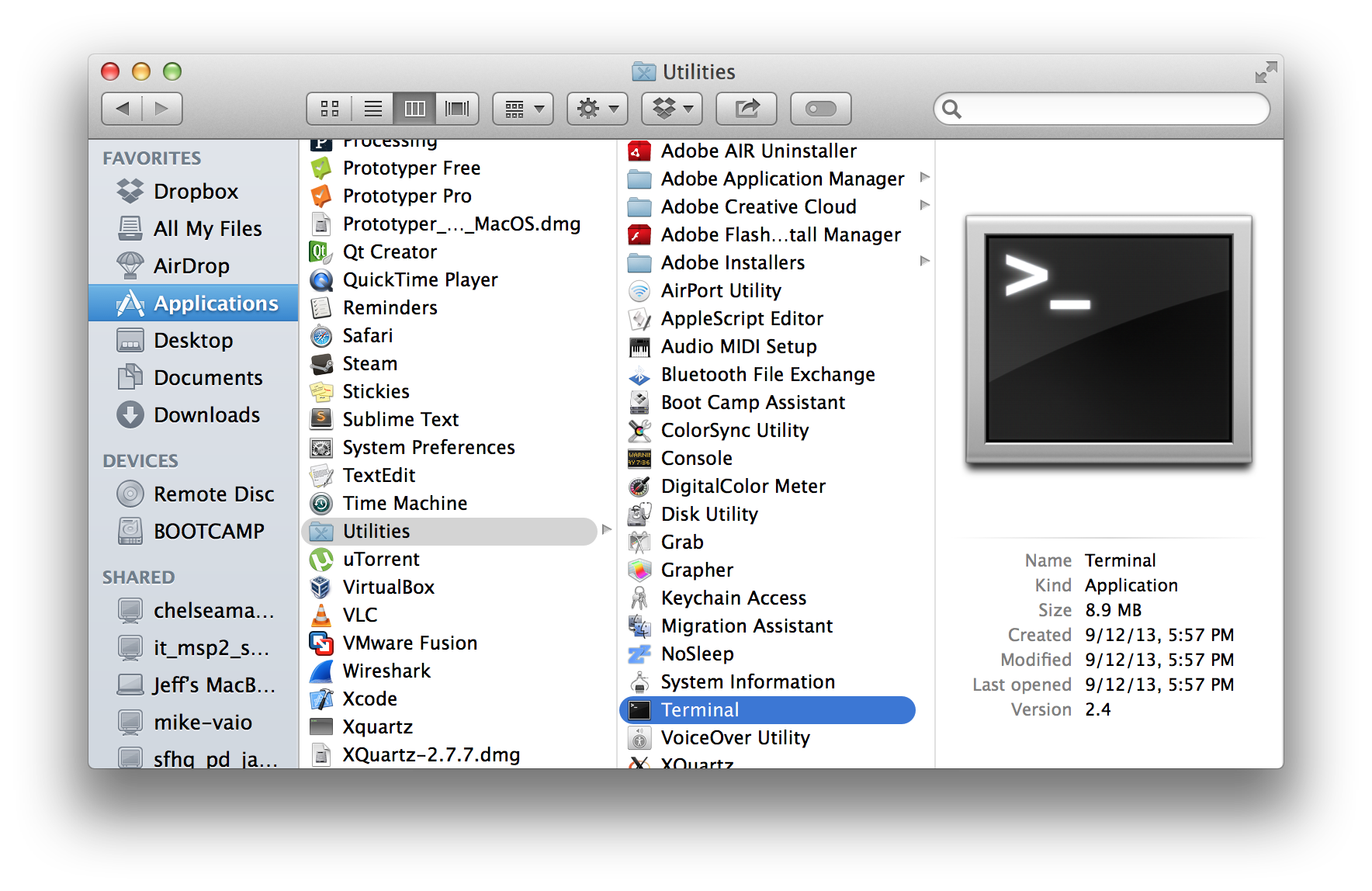

- #OS X OPEN IN TERMINAL HOW TO#
- #OS X OPEN IN TERMINAL CODE#
- #OS X OPEN IN TERMINAL PASSWORD#
- #OS X OPEN IN TERMINAL PLUS#
#OS X OPEN IN TERMINAL PLUS#
You can also create your own custom profiles by clicking the (+) plus sign. You can also further customize this profile if you want to do so. If you want to change it, select one then click the Default icon. The one you are using will say “Default” under it. On the left pane, there are a number of pre-existing profiles.
Click Terminal and Preferences (from the Terminal’s menu bar). You can customize many elements such as colors, fonts, background styles, etc. #OS X OPEN IN TERMINAL HOW TO#
How to change the look of the Terminal window
Make fonts bigger or smaller: Command-Plus (+) or Minus (-). Scroll to top or bottom: Command-Home or End. Line up or down: Option-Command-Page Up or Page Down. Page up or down: Command-Page Up or Page Down. Make fonts bigger or smaller: Command-Plus (+) or (-). Edit background-color: Option-Command-I. Here are some useful shortcuts that can help you save time when using Terminal: Simply enter the following command in Terminal: % sudo shutdown -r now Keyboard shortcuts Similarly, you can also run a traceroute command: traceroute ĭo you want your Mac talking? Here is how you can do this. Please note that completing this command may take a little longer. Please note that we can also do this using Network Utility.Įnter the following command in Terminal: ping So this command will list all of our files in our home folder in a long list format. 
This means that with this option ls command will list out files and directories in long list format.
#OS X OPEN IN TERMINAL CODE#
Enter the following code in Terminal and hit enter: ls -l ~ Let’s use Terminal to lists files and directories within a directory. This command requires you to be logged in with an administrator account. Please note that be extra careful when executing the sudo command. In this article, we will not give a lot of details but we will give you a few examples to give you ideas: If you want to use Terminal, you need to know the most important commands. The ~ sing indicates that my current folder is my home folder. This means that the user (fskurt – this is me) is logged in to a Mac named Serthats-MacBook-Pro. If you look at the Terminal window above, it says:
#OS X OPEN IN TERMINAL PASSWORD#
See also: How Do I Password Protect My Files & Folders In macOS? Basic Terminal Commands To close a shell session, enter exit and hit enter. To quit Terminal, you may go to Terminal > Quit Terminal. The window will include your last login info. The window will say your username and the word bash in the title. Now, you’ll see a small window open on your desktop, as you can see below.
When it is highlighted, click to open it.Īnd a different way to open is to use Launchpad. Open the Spotlight window (you may press the Command and Space keys together or you may use the search icon in the menu bar). To open it:Īnother way to open the Terminal app is to use Spotlight ( Spotlight not working?). So you may do one of the following:Īs I stated above Terminal an app that can be found in /Applications/ Utilities. There are a number of different ways to open Terminal. See also: macOS Won’t Go To Sleep? Fix How to open Terminal on your Mac The command-line interface (CLI) is called bash (Bourne again shell). The Terminal app provides a command-line interface to let you control and customize your Mac. It lets you enter commands in the command line. It is an app included in the Mac operating system. Basically, Terminal is a command-line interface (CLI – or the language you type to interact with your computer) for macOS. In this article, we explain what is Mac Terminal, how to use it, and what it can do for you. In many articles, we recommend our readers to use the Terminal app to troubleshoot various problems that our readers may be having with your Mac. The Terminal app lets you control your Mac. 
Facebook Twitter Pinterest LinkedIn Print Email







 0 kommentar(er)
0 kommentar(er)
